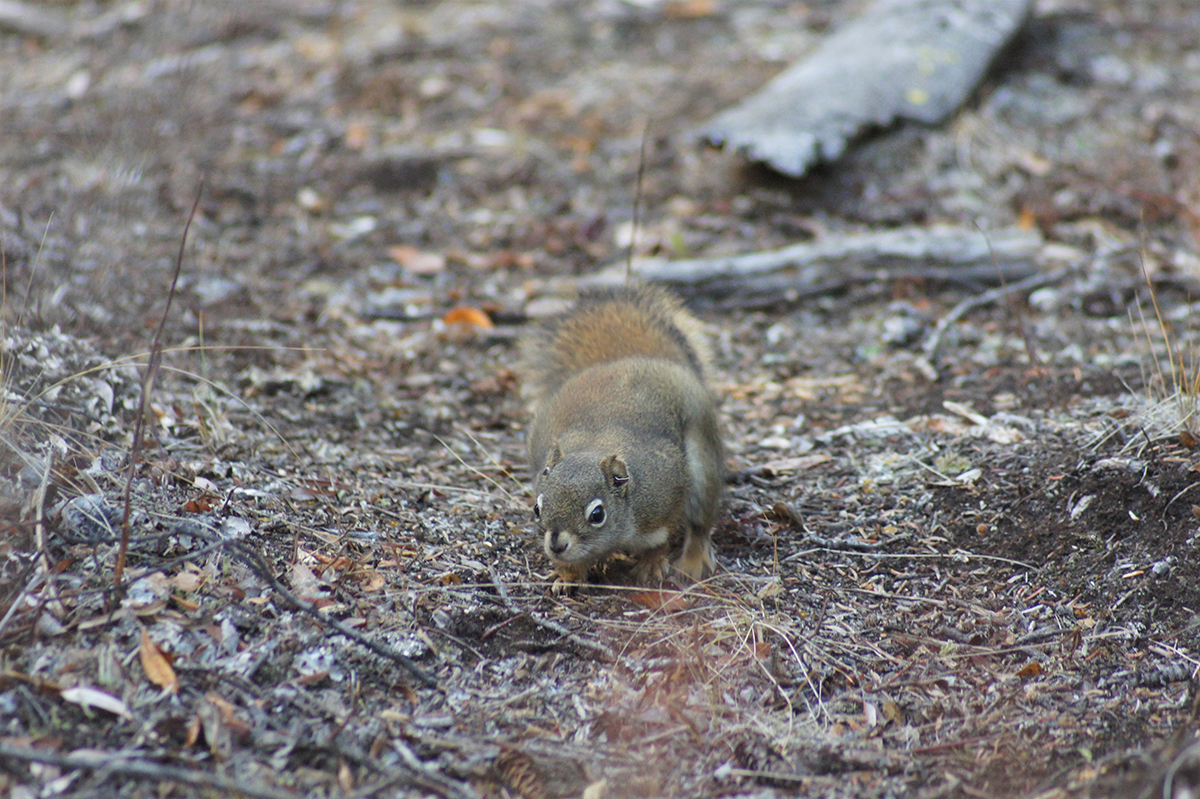
A North American red squirrel in search of spruce cones to cache. Photo credit: Anni Hämäläinen.
Female squirrels who align their reproduction to take advantage of food-rich years and have more pups that survive to maturity, according to new research from UAlberta biologists
Roughly twice a decade there occurs a mast seeding year for spruce trees, a phenomenon where spruce trees produce huge numbers of spruce cones far beyond the norm. This kind of opportunity comes once in a squirrel's lifetime, as spruce mast seeding only happens every few years at an unpredictable frequency.
Squirrel baby boom
"When this happens, there is enough food around to support many more squirrels than at times of low cone production," explained Anni Hämäläinen, biologist and postdoctoral fellow. "Any babies born on the eve of such abundance will have a much higher chance of surviving the harsh winter ahead, relying on a pantry full of cones."
The baby-boomer squirrel pups born in times of abundance are much more likely to survive to maturity.
Natural selection at work
"It is a prime example of natural selection due to variation in the environment," said Hämäläinen. "Female squirrels that can identify a mast year and maximize their breeding efforts accordingly have enduring legacies, as more individuals in the next generation of squirrels will be carrying her genes."
As any parent knows, producing and raising offspring takes a lot of time and energy. And, for squirrels anyway, being a parent can shorten one's lifespan when said time and energy is limited. For squirrels, the ability to interpret cues from the environment that allow the parent to anticipate mast years allow them to make more informed reproductive decisions, and set their pups up for success.
The paper, "Fitness consequences of peak reproductive effort in a resource pulse system," is published in Scientific Reports. DOI: 10.1038/s41598-017-09724-x